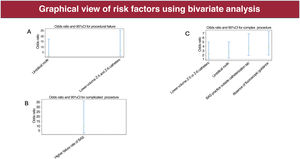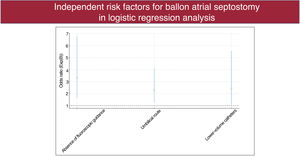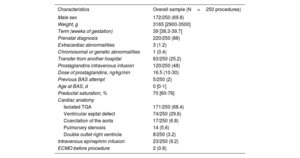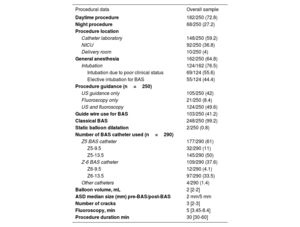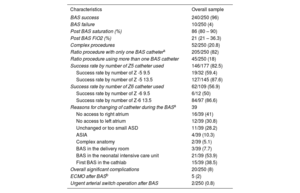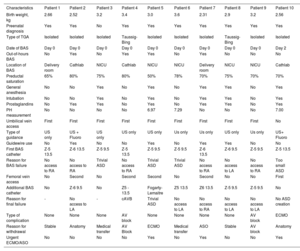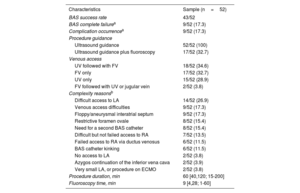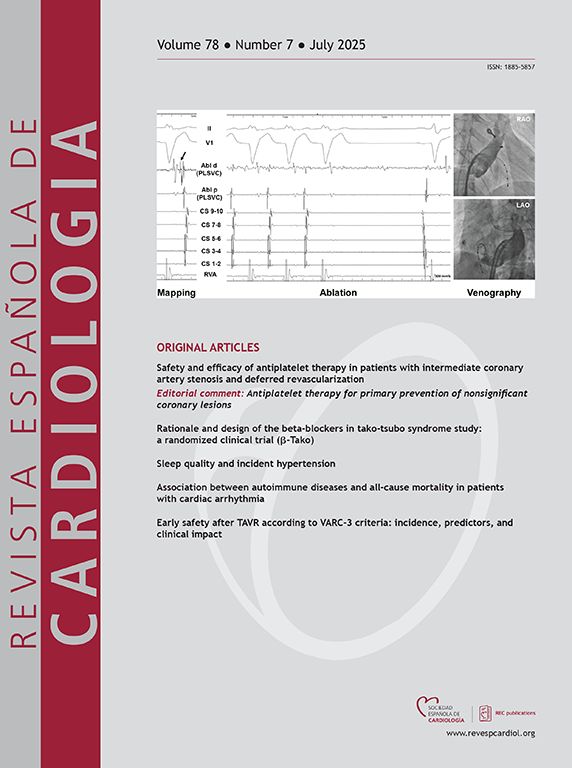
Balloon atrial septostomy (BAS) improves oxygenation in neonates with transposition of the great arteries (TGA) and restrictive foramen ovale. Currently, there is a global shortage of dedicated BAS catheters, while new unmarked catheters have recently become available at some European centers. This study aimed to characterize BAS outcomes using the currently available BAS catheters in Europe.
MethodsA 2-year multicenter observational registry was conducted, including all neonates undergoing BAS for TGA. We report preliminary results (September 2022-February 2024) focusing on BAS characteristics and outcomes.
ResultsA total of 250 BAS procedures were performed in 29 centers. The median neonatal weight was 3.16kg, and 88% of neonates had a prenatal diagnosis. Most procedures were performed often on the first day of life during working hours (72.8%), mainly in catheterization laboratories (59.2%). Guidance primarily involved ultrasound with or without fluoroscopy. A guidewire was used in 41.2% of procedures. A total of 290 catheters (286 Z-5 or Z-6) were used, achieving an overall BAS success rate of 96%. Complete procedural failure was associated with the use of the umbilical venous route (OR, 3.62; P=.001) and lower-volume catheters (OR, 7.01; P<.001). The occurrence of significant complications (8%; OR, 9.33; P<.001) was associated with complete procedural failure. For complex procedures, significant risk factors were the absence of fluoroscopy (OR, 3.32; P=.001), use of the umbilical venous route (OR, 2.28; P=.005), and lower-volume catheters (OR, 2.43; P=.03).
ConclusionsIn the current era, BAS can be challenging, and significant complications and complete failures are not uncommon. The use of the umbilical venous route, low-volume BAS catheters, absence of fluoroscopy guidance, and the occurrence of complications negatively impact procedural outcomes.
Keywords
Identify yourself
Not yet a subscriber to the journal?
Purchase access to the article
By purchasing the article, the PDF of the same can be downloaded
Price: 19,34 €
Phone for incidents
Monday to Friday from 9am to 6pm (GMT+1) except for the months of July and August, which will be from 9am to 3pm





